Finding Lane Lines on the Road
The goal of this project is to find the lane lines in videos captured by a camera placed in the front of a car by using classical Computer Vision algorithms. The original repository is CarND-LaneLines-P1 (Udacity)
Reflection
1. Describe your pipeline. As part of the description, explain how you modified the draw_lines() function.
My pipeline consisted of 6 steps.
- I applied 2 color filters that return two masks corresponding to 2 colors of lane lines in videos: white and yellow.
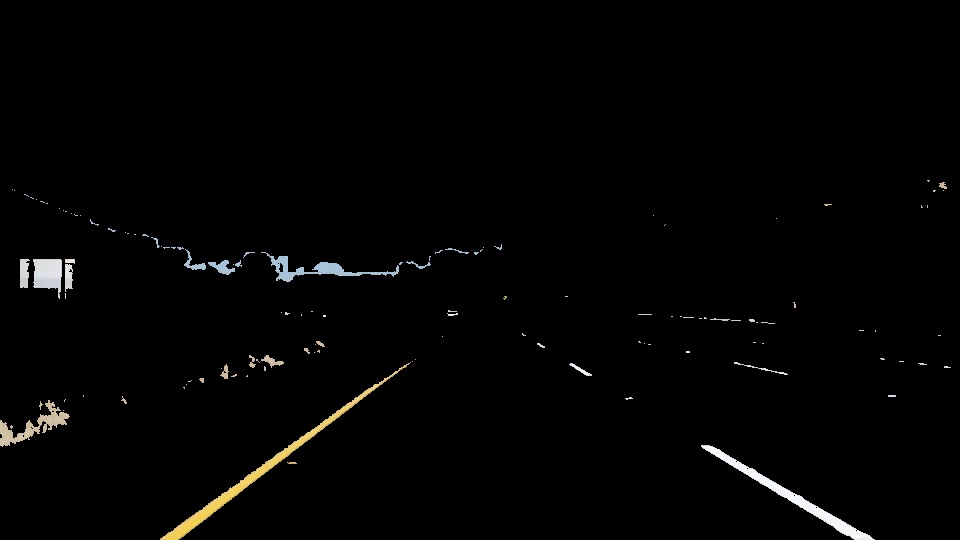
- I converted the images to grayscale.
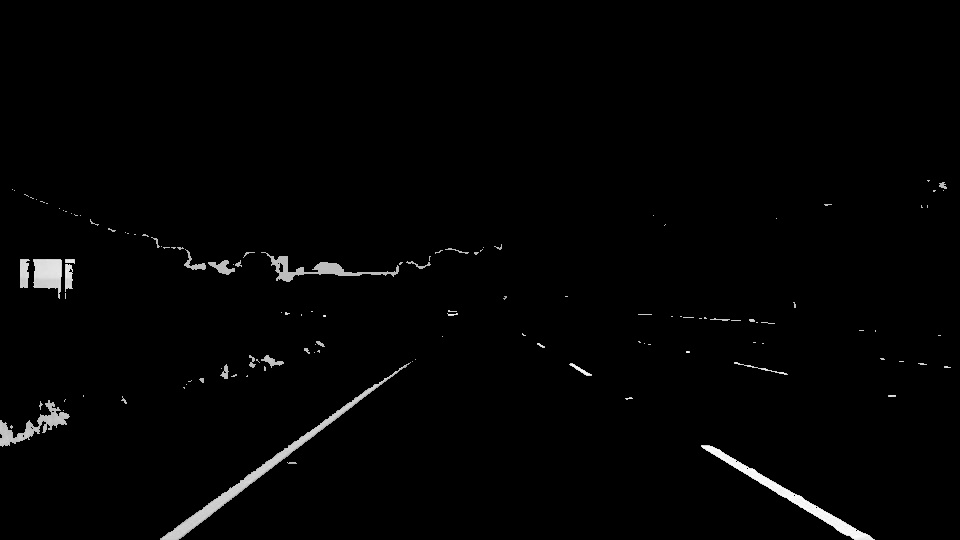
- I smoothed the gray image by using a Gaussian filter with a kernel size of 5.
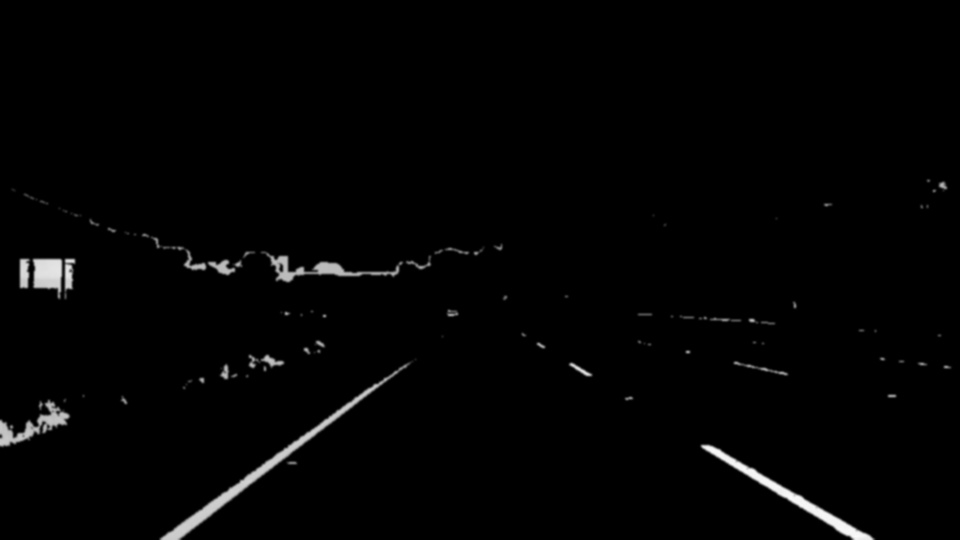
- I used the Canny algorithm to detect edges in the blurred image with the parameters: low_threshold=50, high_threshold=150.
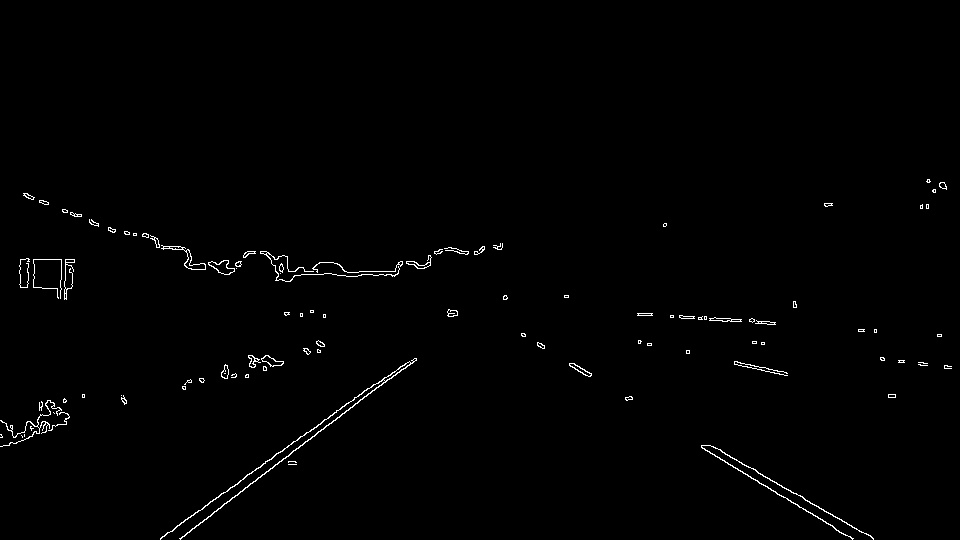
- I defined four vertices in the image, then use cv2.fillPoly() function to find the RoI bounded by the defined vertices.
- I used the Hough transform algorithm to detect lines.
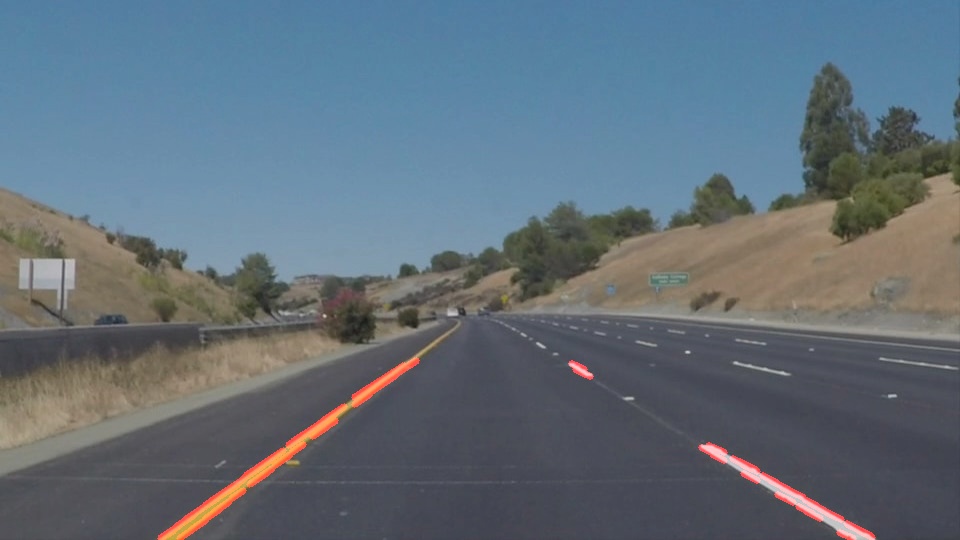
In order to draw a single line on the left and right lanes, I add a new function draw_lines_extrapolate(). This task included 5 steps:
- I separated points in detected lines to the left lane and the right lane by considering the slope values between two points in a line.
- If (x1 == x2) ~ a vertical line, I set the slope = 1e9
- If the slope of a line between 2 points is negative, the 2 points were placed in the left lane.
- If the slope of a line between 2 points is positive, the 2 points were placed in the right lane.
The slope was rounded with 2 digits, then multiply to 100, and added to the left_slopes and right_slopes lists.
- The slope with the highest frequency in each slopes list was considered as the standard slope of the lane line.
- If a point has a slope that is out of the accepted range of slopes, I removed it. After this step, I obtained the 2 clean sets of points on the left and right lane lines.
- Using cv2.fitLine() to find the line parameters for the two lane lines based on the clean sets of points.
- I calculated the two endpoints (x1, y1) and (x2, y2) of each lane line with a convention that: y1 = height-1.
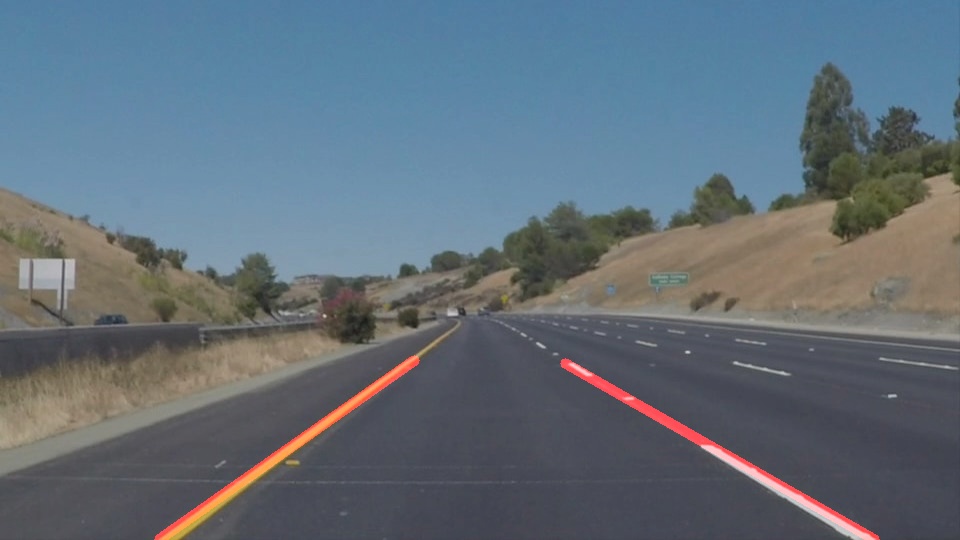
Video results:
- White Lane detection: https://youtu.be/BVatQbo-OSw
- Yellow Lane detection: https://youtu.be/IwYz8S9-vyY
- Challenge video: https://youtu.be/CChspbNZw9I
2. Identify potential shortcomings with your current pipeline
There are several disadvantages to this approach.
-
First, one potential shortcoming would be what would happen when the lane lines are colored by non-white and non-yellow color, or the car is driving at night. We need to control the threshold in the cv2.inRange() function.
-
Second, the current pipeline may not work well in a scene that has many curves.
-
Third (Finally), another shortcoming could be related to the camera position. In the project, I played with videos mounted on the front of the car. If the camera is located in other positions, I need to change the vertices in the fifth step.
3. Suggest possible improvements to your pipeline
A possible improvement would be to detect more complex models based on edges that are from the Canny algorithm.